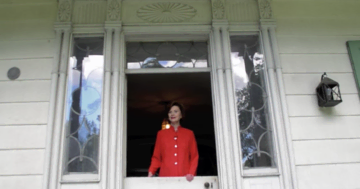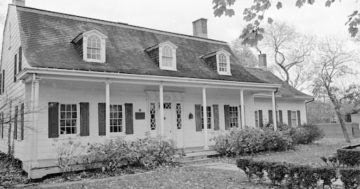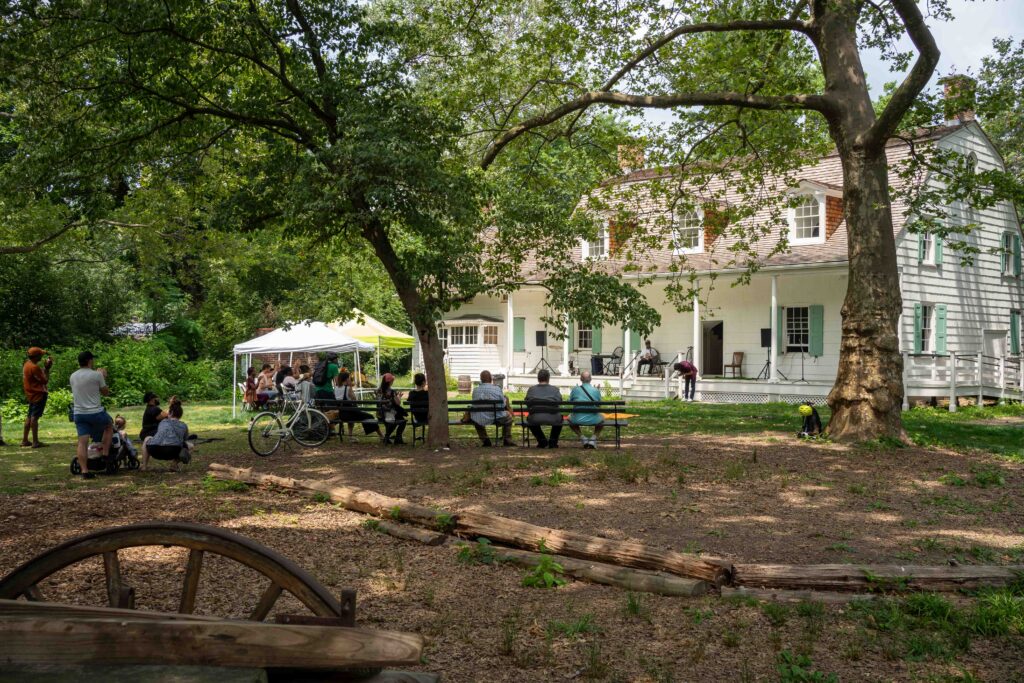
Lefferts Historic House Museum
Lefferts Historic House is an 18th-century Flatbush farmhouse and New York City landmark, jointly operated by Prospect Park Alliance and the Historic House Trust. The farmhouse was originally located just blocks from the park (563 Flatbush Avenue near Maple Street) and moved to Prospect Park in 1918. The museum within this farmhouse explores the living legacies of the Indigenous people of Lenapehoking and the Africans enslaved by the Lefferts family.
One of the few remaining farmhouses from the Village of Flatbush, Lefferts Historic House offers thought-provoking exhibits, cultural performances and imaginative play to honor the legacies of the Indigenous and African peoples that continue to shape day-to-day life in Brooklyn today.
What is now Flatbush was a hub of commerce and culture for thousands of years before the arrival of Europeans. The Indigenous people of Lenapehoking grew the Three Sisters (corn, beans and squash) on this land and produced prized wampum beads that were traded across the continent from the rich shellfish. Flatbush Avenue, where Lefferts Historic House sits today, is an ancient Lenape road.
European settlers under the direction of the Dutch West India Company seized what became Flatbush by force in 1645. This battle and many to follow pushed many Lenape further east into Long Island and west into New Jersey and Pennsylvania, and eventually as far away as Oklahoma, Wisconsin and Canada. Those who remained, and others now returning to their ancestral land, continue to steward this region, leading the fight to preserve the region’s ecosystems and confront climate change.
The Lefferts family began settling in what would become Flatbush in the 1660s, when they were granted 100 acres of land taken from the Lenape. Like many European colonists, the Lefferts claimed and cultivated these seized lands through the forced labor of enslaved Africans. The wealth they extracted from the land and people enabled the Lefferts family to build a large wood-frame farmhouse and accumulate thousands of acres of property across the region.
In 1776, British soldiers suppressing the American Revolution burnt down the Lefferts family’s Flatbush farmhouse. After American independence, the Lefferts family commissioned a new family homestead, likely built with enslaved labor. This house was moved from its original location on the corner of Flatbush Avenue and Maple Street into Prospect Park to make way for a large apartment building in 1918.
Ongoing research confirms that at least 25 Africans were enslaved at Lefferts Historic House between 1783, when the house was built, until 1827 when New York State abolished slavery. During this period more enslaved people lived at the property than free. The Africans enslaved by the Lefferts ran a 300 acre farm and managed household affairs. They also fought for better working conditions and to end slavery in New York and nationally. Some self-emancipated while others remained on the farm, even after they gained their freedom from the Lefferts. The Africans enslaved by the Lefferts helped found churches, mutual aid societies and political action groups in Brooklyn. They also helped found the Black settlement of Weeksville.
Surrounding a $2.5 million dollar restoration funded by the Brooklyn Delegation of the New York City Council in 2021, Prospect Park Alliance launched ReImagine Lefferts, funded through a Humanities in Place grant from the Mellon Foundation. ReImagine Lefferts is an initiative to re-envision the mission and programming of the museum to focus on exploring the lives, resistance and resilience of the Indigenous people of Lenapehoking, whose unceded ancestral lands the park and house rests upon, and the Africans enslaved by the Lefferts family.Prospect Park Alliance is currently working with descendants and neighboring communities, culture bearers, scholars, artists, civic leaders and museum professionals to develop and pilot innovative new ways to engage with this important history for audiences of all ages and backgrounds..
The Mellon Foundation funded a new interpretive plan for the museum site created in partnership with descendant communities in 2023. With additional support from the Mellon Foundation, Prospect Hill Foundation and State Assembly Members Robert Carroll and Brian Cunningham, the Alliance is now adding new outdoor exhibits and landscape features to communicate the Indigenous and African histories of Brooklyn to future generations. By focusing on the stories of resistance, resilience and joy while also recognizing the legacies of dispossession, enslavement and oppression, the Alliance seeks to relate a safe space for engaging with our collective past as well as contemporary issues affecting our community today.
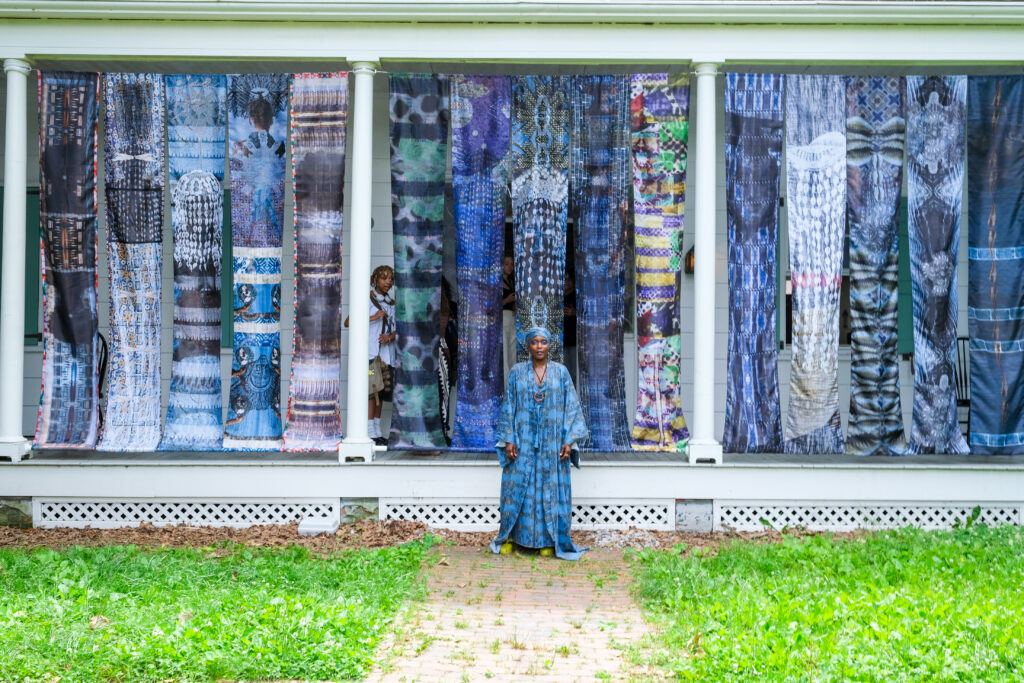
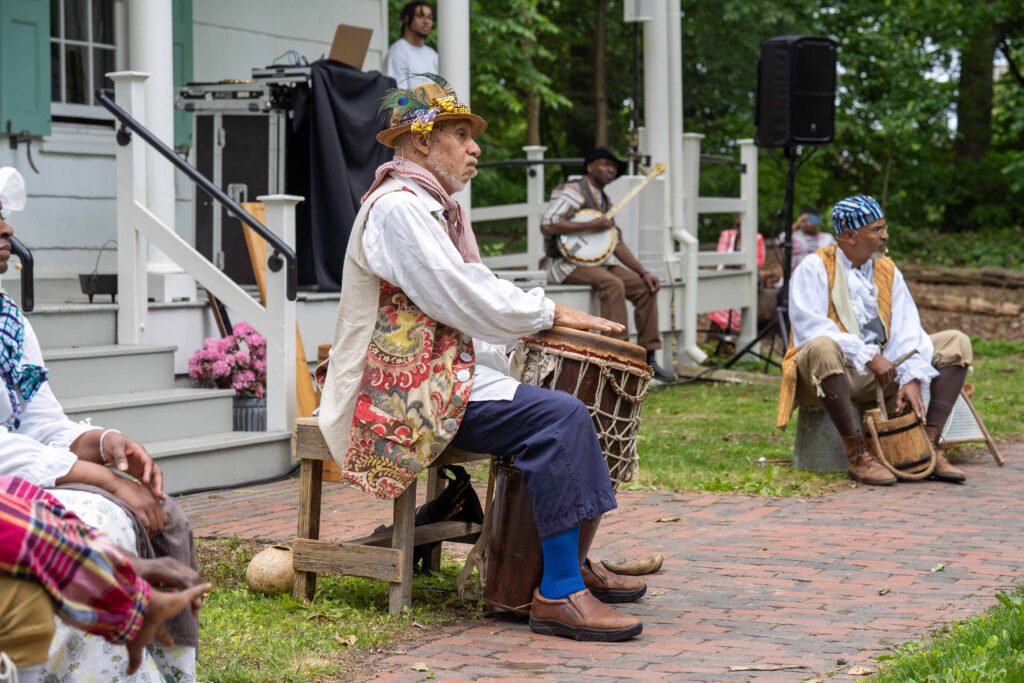
Lefferts House is owned by the New York City Department of Parks & Recreation, operated by the Prospect Park Alliance and is a member of the Historic House Trust.
If you would like to donate to Prospect Park Alliance directly, please click here.
Digital Content:
Learn more about the Alliance’s ReImagine Lefferts Initiative.
View the interpretive plan for the Lefferts Historic House museum.
General Admission: Free






